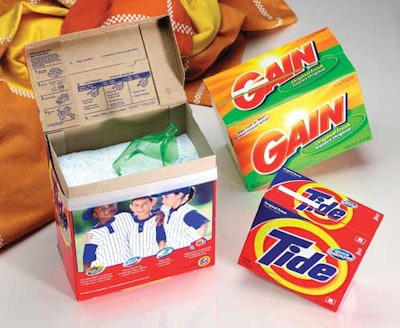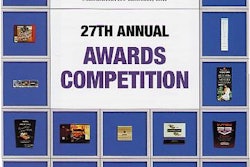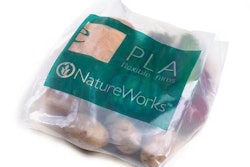
Following a lengthy exploration of alternatives, Procter & Gamble switched the packaging of its dry detergent cartons to a film/paperboard lamination. Previously, the Cincinnati-based company used paperboard cartons that had a gravure-press-applied lacquer for moisture barrier.
“We initially brought this package to the market about two years ago,” says Denny Ruehl, senior engineer/scientist in packaging product development for cleaning products at P&G. “We tied it into one of our product initiatives, specifically quick-dissolving-action Tide.” During 2002, the company began to convert all sizes of its cartons for all Tide varieties, along with those of its Cheer and Gain brands.
Earlier, P&G evaluated a number of different structures, all geared to improving the moisture barrier for the package. In the end, it decided on an adhesive lamination of 60-ga GRX film from AET Films to one-side, clay-coated recycled boxboard in 24- to 28-pt calipers, depending on box size. GRX is an acrylic-coated oriented polypropylene film. Boxes come from two sources, Smurfit-Stone Container Corp. and Specialized Packaging Group.
The motivation for the change was consumer complaints about lumping and caking of the powdered products. Both P&G product and package development groups monitor consumer complaints to the company’s consumer response lines. “Historically, one of the major complaints—very close to the top from a packaging perspective—is the issue of product lumping when the consumer tries to use the scoop to transfer the detergent to the washing machine,” Ruehl recalls. “We addressed how we could reduce those complaints.”
As Ruehl points out, some of these complaints are seasonal, even regional. To date, he reports, “we’ve seen a ‘directional’ reduction in complaints since we made the packaging change.” The company won’t claim that it’s a huge or a significant statistical change, but “the new package has affected the number of complaints,” Ruehl states.
From a technical analysis, this film lamination has improved the moisture-barrier protection by approximately 50%, he says. In the past, carton converters used two to three stations on their gravure printing presses to apply lacquers in-line with printing the clay-coated boxboard.
In addition, P&G realized another major benefit created by the film on the outside of the box: substantially improved gloss, compared to the former lacquer. Or, as Ruehl puts it: “This particular package addresses what we call our ‘first moment of truth’—when a shopper first takes a look at the package in the store. The film on the outside of the box significantly enhances the appearance.”
The improved barrier properties of the film also improve what Ruehl calls “the ‘second moment of truth’—after the consumer uses the product for the first time.”
Other benefits, too
Although those benefits were the goals for the change, P&G reports a number of other smaller advantages from the shift to the film-laminated cartons. For example, since its converters no longer have to devote two stations on the gravure press to applying the lacquer, it permits more flexibility to P&G for the use of additional colors or more back-side printing. For some products, P&G prints usage instructions on the inside of the carton, in the area that becomes the box lid.
In terms of the moisture barrier, Ruehl reports less variation than previously experienced with the lacquer-protected cartons. “In our testing and qualifications, not only did the film improve barrier properties, but it also reduced the variations that we had seen in the past,” Ruehl says. Those variations could be caused by the gravure cylinders, the lacquer itself, or the speed of the press, he says.
Further, the new cartons run more consistently on P&G’s detergent packing lines. “We call it the score-bend ratio for the amount of resistance you have in manipulating the material on the packing line,” Ruehl reports. “This material is a bit stiffer, along with a higher coefficient-of-friction, so we had to make adjustments to our equipment to compensate. Once we completed those adjustments, the new material has run more consistently.” When asked about reduced downtime or improved output, Ruehl said he couldn’t disclose any “significant numbers” attributable to the new material.
P&G declined to discuss the economics of the new package. “It wasn’t a thing that we felt would be a significant issue,” Ruehl states. “A lot of this has to do with how efficiently a team—with our carton suppliers and film supplier—worked together to address both manufacturing and economic issues.”























